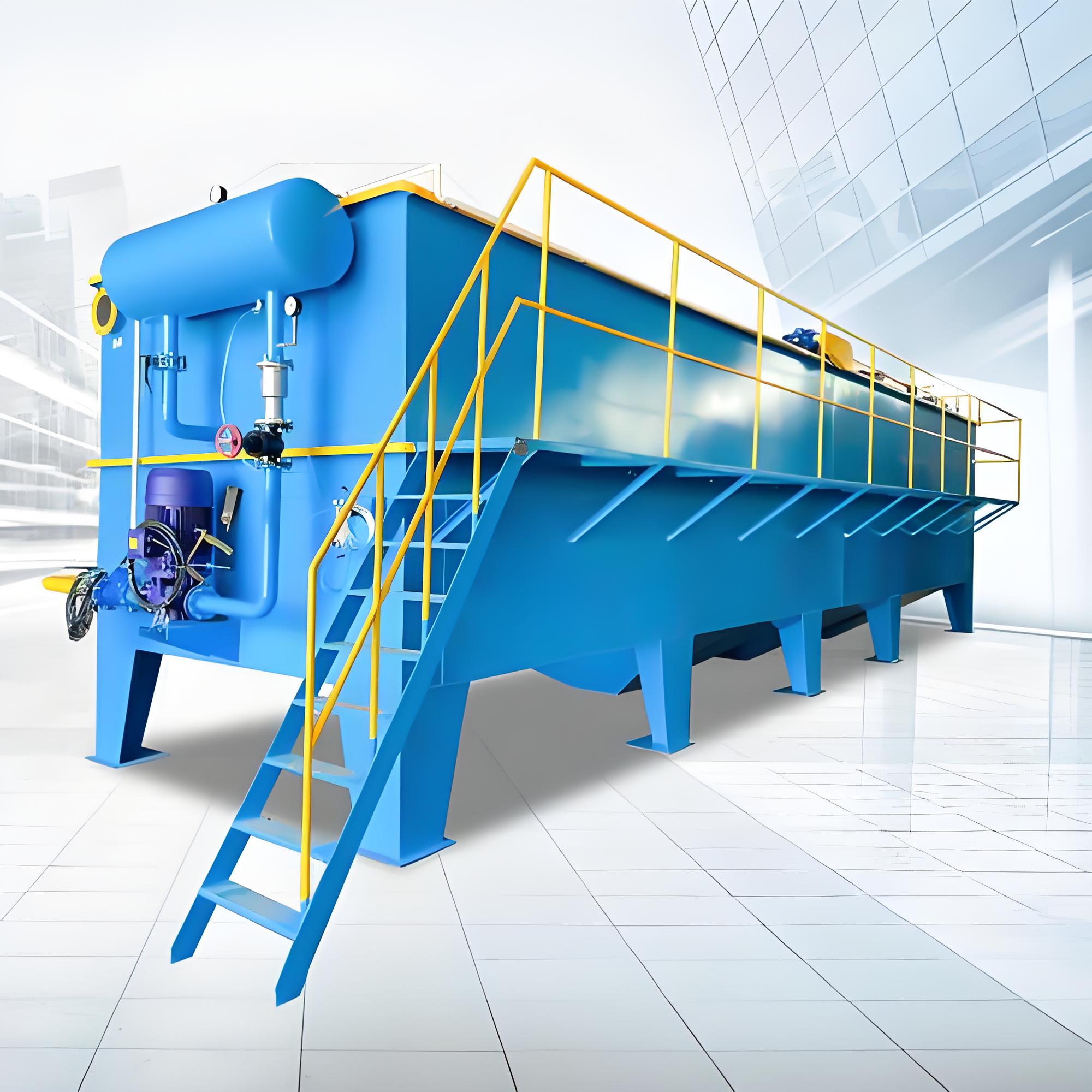
Air flotation and sedimentation integrated machine is a water treatment equipment that integrates air flotation and sedimentation functions, widely used in the treatment of industrial wastewater, municipal sewage, and domestic sewage. It efficiently removes suspended solids, oils, colloids, and some soluble pollutants from water through physical and chemical methods, with advantages such as high treatment efficiency, small footprint, and easy operation.
Working principle
Air flotation process:
The equipment dissolves air in water through a dissolved air system, forming high-pressure dissolved air water.
Dissolved water is depressurized in the release device, releasing a large number of tiny bubbles (usually 20-100 microns in diameter).
Microbubbles combine with suspended solids, oil droplets, and other pollutants in water to form flocs with a density lower than that of water, which float to the surface to form a scum layer.
The floating slag is discharged through a scraper or slag discharge device to achieve solid-liquid separation.
Precipitation process:
Particles or pollutants with high density that have not been removed by air flotation sink to the bottom of the equipment under the action of gravity.
Sediments are discharged through the sludge discharge system to further purify the water quality.
Equipment features
Efficient removal of suspended solids and oils:
The combination of air flotation and sedimentation can effectively remove suspended solids, oils, and some colloidal pollutants in water, with high treatment efficiency.
Small footprint:
The equipment has a compact structure, integrating air flotation and sedimentation functions, reducing the footprint and civil engineering investment.
Easy to operate and highly automated:
Equipment is usually equipped with an automatic control system, which can achieve continuous operation and automated management, reducing manual operations.
Strong adaptability:
The process parameters can be adjusted according to different water quality and treatment needs, and are suitable for the treatment of various industrial wastewater and municipal sewage.
Low operating costs:
The equipment has low energy consumption, high gas dissolution efficiency, and low operation and maintenance costs.
Application Fields
Industrial wastewater treatment:
Suitable for oily wastewater, suspended solids wastewater, and high concentration organic wastewater generated in industries such as petrochemicals, mechanical processing, food processing, textile printing and dyeing.
Municipal sewage treatment:
Can be used for pre-treatment or deep treatment of urban sewage treatment plants to improve effluent quality.
Domestic sewage treatment:
Suitable for the treatment of domestic sewage in residential areas, schools, hospitals, etc., removing suspended solids and oils.
Other fields:
The treatment of special wastewater such as papermaking wastewater, electroplating wastewater, and slaughter wastewater.
Advantage analysis
High processing efficiency:
The combination of air flotation and sedimentation can simultaneously remove suspended solids, oils, and some dissolved pollutants in water, with significant treatment effects.
Stable operation:
The equipment adopts automated control, which runs stably and reliably, reducing manual intervention and operational risks.
Energy conservation and environmental protection:
The equipment has low energy consumption, high gas dissolution efficiency, and no secondary pollution, which meets environmental protection requirements.
Good economy:
Low equipment investment and operating costs, suitable for small and medium-sized sewage treatment projects.
Precautions
Preprocessing requirements:
For high concentration wastewater or wastewater containing a large amount of difficult to degrade pollutants, appropriate pretreatment (such as adjusting pH, adding chemicals for coagulation, etc.) is needed to improve the air flotation sedimentation effect.
Equipment maintenance:
Regularly inspect the operation of components such as the gas dissolution system, release device, and scraper, promptly clean up blockages, and ensure the normal operation of the equipment.
Sludge treatment:
The floating slag and sludge generated by air flotation and sedimentation need to be properly treated to avoid secondary pollution.
Water quality monitoring:
Regularly monitor the quality of incoming and outgoing water, adjust process parameters, and ensure that the treatment effect meets the standard.
PREV: Mechanical grid equipment
NEXT: anaerobic reactor